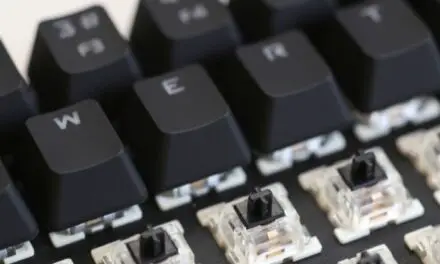Vlogging has become an increasingly popular way to share your thoughts and experiences with the world. Whether you’re a seasoned vlogger or just getting started, you need a device that can keep up with your creative needs.
One question that many vloggers have is whether or not a Chromebook is a good option for their needs.
In this blog post, we’ll explore the features of Chromebooks and their suitability for vlogging.
Table of Contents
Are Chromebooks Good for Vlogging?

Chromebooks can be a great option for vlogging, especially if you’re just starting out or on a budget and can settle for producing videos in 1080p. They are lightweight, easy to use, and offer a built-in webcam and microphone, which can be sufficient for simple vlogging needs. Additionally, they typically have a longer battery life than many other laptops, which can be useful for recording on the go.
However, for more advanced vlogging needs, such as 4K+ video editing or the use of specialized equipment or software, a more powerful and diverse laptop may be necessary.
Actually, for basic needs, the camera app on a Chromebook offers some pretty cool features, including being able to create animated GIFs.
When you open up the Chromebook camera app, the camera should switch on and you should see yourself. If not, you may need to flip a switch on your Chromebook to disable the privacy shield on your camera.
Some two-in-one Chromebooks even have a second camera near the keyboard so you can fold it over like a tablet and more easily video what you can see.
And if you’re not happy with the quality of the built-in camera of your Chromebook, there are plenty of high-quality external ones that you can plug in via USB, such as the Logitech HD Pro Webcam C920.
The Pros of Using a Chromebook for Vlogging
Chromebooks are lightweight, affordable, and easy-to-use laptops that offer several benefits for vloggers. They have a built-in webcam and microphone, making it easy to record and edit videos. Chromebooks also have long battery life and are highly portable, making them perfect for vloggers who travel.
They offer decent performance and automatic cloud storage, allowing you to easily access and share your videos. Chromebooks also have a user-friendly interface, integrate very well with YouTube and offer access to a wide range of apps and editing tools, making vlogging a breeze.
Portability
Chromebooks are known for their portability, which is a major advantage for vloggers who are always on the go. The lightweight and slim design of Chromebooks makes them easy to carry around, making them a viable option for travel vloggers or vloggers who attend lots of events or film on location. And the compact design of Chromebooks means they are easy to set up in small spaces, like a coffee shop or a hotel room.
Battery Life
Chromebooks typically have longer battery life than traditional laptops, making them an ideal option for vloggers who have a lot of regular editing to do.
Depending on the model, some Chromebooks can last for up to 12 hours on a single charge, which is a significant advantage when compared to many traditional laptops that may only last for four to six hours.
Longer battery life means you can focus on filming and uploading your vlogs without worrying about running out of battery.
Price
One of the most attractive features of a Chromebook is its affordability. They are generally much less expensive than traditional laptops, which can make them a great option for vloggers who are just starting out and want to keep their costs low.
A speedy Chromebook can be purchased for under $300, while a high-end laptop can cost upwards of $1,000 or more.
Laptops in the $300 range are often severely underpowered and not up to the job of video editing.
Chromebooks, because of the lightweight software they run on, can be very capable devices running on budget hardware.
For vloggers who use their smartphones and don’t need advanced processing power or specialized software, a Chromebook can be a cost-effective option.
They Work Seamlessly With YouTube
Chromebooks are from Google and designed to work seamlessly with Google’s suite of services, including YouTube. Google owns YouTube, and as such, the Chromebook operating system is optimized to work smoothly with the video-sharing platform.
You can easily access your YouTube account from your device. The Chromebook’s operating system is based on the Chrome browser, which makes it easy to navigate and use YouTube’s features, including uploading, editing, and publishing videos.
Chromebooks also have access to various video editing apps and tools that are available on the Google Play Store, including, Clipchamp (which has some great features on the free plan), KineMaster and YouTube Studio, which allows vloggers to edit their videos, add captions, and manage their YouTube channel from their Chromebook.
Cloud-Based Storage
Chromebooks rely on cloud-based storage and web-based applications, which makes it easy to access and store your vlogs from anywhere with an internet connection.
This is a significant advantage for vloggers who may need to collaborate with others, as files can be easily shared and edited in real time.
Additionally, cloud-based storage means that vloggers can free up space on their device’s hard drive, which can be especially useful for those filming a lot of content.
The Cons of Using a Chromebook for Vlogging
While there are many advantages to using a Chromebook for vlogging, there are also some disadvantages to consider. One of the main drawbacks is that the hardware specifications of Chromebooks are often lower than other laptops, which can limit their video editing capabilities. They also have limited storage capacity, which can be an issue if you’re shooting a lot of high-quality videos.
Additionally, not all video editing software is available for Chromebooks, which can limit your options for advanced video editing. Chromebooks also don’t have as many ports as other laptops, which can be a problem if you need to connect external devices like cameras or microphones.
Some external devices may also not work well or be compatible with ChromeOS. If you’re planning to use any external video editing devices with your Chromebook, it’s a good idea to check the manufacturer’s website to ensure compatibility.
Limited Storage Space
One of the biggest disadvantages of using a Chromebook for vlogging is the limited storage space. Most Chromebooks come with 32GB or 64GB of storage, which can quickly fill up if you’re recording high-quality videos.
This can be especially problematic if you don’t have access to reliable internet connectivity to upload your videos to cloud-based storage.
Vloggers who need a lot of space for storage may need to invest in external hard drives or utilize additional cloud-based storage solutions.
Related Article: Are Chromebooks Better Than Laptops? (All You Need To Know)
Limited Processing Power
Chromebooks typically have less processing power than traditional laptops, which can be a disadvantage for vloggers who require more advanced editing software or high-quality video recording capabilities.
This can lead to slow performance or crashes if you’re using resource-intensive applications.
While basic video editing can be done on a Chromebook, more advanced editing tasks may require a more powerful laptop or desktop computer.
Limited Software Availability
Chromebooks rely on web-based applications, which means that some software programs may not be available or compatible with Chrome OS.
This can be a significant disadvantage for vloggers who require more advanced software to edit and enhance their videos.
While there are web-based alternatives available, they may not be as robust or offer the same level of functionality as software applications you download onto your device. This can limit your ability to create high-quality content and can prevent you from using specialized tools or software.
Limited Connectivity Options
Most Chromebooks come with limited connectivity options, which can be a disadvantage for vloggers who need to connect to external peripherals like external microphones, cameras, or other accessories that can enhance the quality of their videos.
Some Chromebooks may not have a dedicated HDMI port, which can be problematic if a vlogger needs to connect their device to an external monitor. While it is possible to use external accessories with a Chromebook, this may add additional expense to your setup.
Some External Devices may not work on a Chromebook
Some external devices may not be compatible with a Chromebook due to differences in hardware or software between the device and the Chromebook.
For example, some external devices may require specific drivers or software that are not available for ChromeOS, the operating system that runs on Chromebooks.
Some devices may also use proprietary technology or protocols that are not supported by ChromeOS. In general, it’s important to check the manufacturer’s website and ensure compatibility before purchasing an external device for use with a Chromebook.
In conclusion, Chromebooks can be a great option for vloggers who need a portable and affordable device for basic video recording and editing tasks.
The long battery life and cloud-based storage make Chromebooks an attractive option for vloggers who need to work on the go, while the low cost can be an advantage for vloggers who are just starting out.
However, there are some limitations to using a Chromebook for vlogging, including limited storage space, processing power, video recording quality, software availability, and connectivity options.
Ultimately, the decision to use a Chromebook for vlogging will depend on your personal needs and preferences. Chromebooks can be a cost-effective and portable option for basic video recording and editing tasks, while traditional laptops and specialized equipment can offer more advanced features for vloggers who require a higher level of production quality.
It is important for vloggers to evaluate their priorities and technical requirements before making a decision on which device to use for their vlogging needs.



